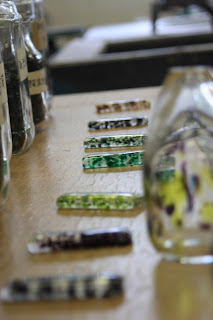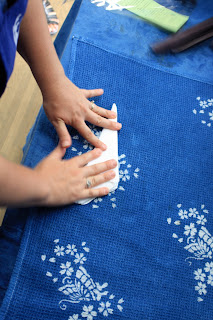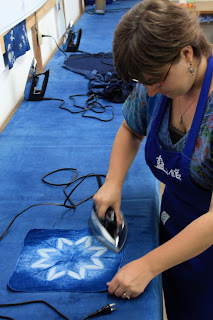(Beware of parenthetical remarks (You have been warned.)).
1. Learn Japanese.
2. Go to a sushi restaurant.
3. Sit at the counter.
4. Order individually created plates of sushi created by a master chef specifically for you.
5. Enjoy the freshest, best fish in the world.
OR
How to eat sushi in Japan for poor people:
1. Learn Japanese (this step is more important than you might think).
2. Go to a fast-food sushi restaurant, where each plate is only 105 yen. It’s like a McDonald’s for sushi (except with computers! And a conveyor belt!).
3. Try to interact with the computer and tell it how many people are in your party.
4. Realise you didn’t actually do step one, and can’t figure out how to work the computer.
5. Flag down a hostess/waitress and have her do it for you.
6. Wait for your number to be called.
7. Because you’re a foreigner and are just excited about sushi, and requested, “First available”, your number will be called immediately (The choices are: “Booth”, “Counter”, or “First available”. No one else wants to sit at the counter, so off you go).
8. Sit down at counter.

9. Gawk as sushi rolls past on a conveyor belt.
10. Search for drinks.
11. Find cups on a shelf above your head.
12. Fill cup with water from spigot conveniently located on the counter in front of you.
13. Take a drink and burn tongue because it’s hot water for making Japanese green tea (Cold water not available (Soft drinks available upon interaction with a Japanese computer)).
14. Realise your dinner is passing you on a track, and you’re missing out on eating yummy sushi!
15. Reach for a plate, but too slowly. You have at most four seconds from recognising a fish until it is no longer in reach.
16. Decide now!
17. Do you want salmon?
17.1. Shrimp?
17.2 Tuna?
17.3 Roe?
17.4 Unknown white fish?
18. Arggh!
19. In the meantime, keep an eye on all the other diners, watching for protocol and what to do at the end of the meal, i.e. how to pay.
20. Notice that you’ve seen this sushi before. Deduce that the belt travels in a loop; if you miss one, another will be along shortly.
21. Relax and have fun trying new foods. Fish eggs ... No problem! Tomato-Basil Salmon ... Um, okay? Sea urchin ... Ugh, slimy. (Of course, the nice thing about sushi is: if you don’t like it, it’s only bad for one bite.)

22. Clear palate on a nice, safe, normal, raw salmon. (Yes, Japan has a tendency to redefine “normal”).


23. When you feel you have personally deflated the tuna population of the Pacific by at least 4%, attempt to flag down the waitress (Remember how you were watching the others diners to see how they ended their meal? No? Us, neither).
24. Stare helplessly at the Japanese computer on the counter in front of you (remember step one?). Will it to display something - anything - helpful. English would be nice. Or pictures. Maybe of a waitress coming to your aid.
25. Bang on the computer like a monkey trying to write Shakespeare.
26. Sooner or later, a waitress will notice your distress and come to your aid. That, or you accidentally called her 15 times.
27. Wait while the waitress whips out a ruler that is calibrated in “Plate Heights” and measures just how much tuna the ocean is now missing.

28. After she has scanned the bar code on her ruler at the appropriate measurement and your entry ticket, take the ticket to the cash register. This is your bill.
29. Pay for your meal.
30. Marvel at the sheer volume of sushi you can eat for a mere $25 (that’s for two people, folks!)
31. Waddle to your bicycle and hope you can make it home.
(The pictorial guide for this “How-To” post is woefully inadequate due to the abundance of yummy sushi. Perhaps we should go eat sushi again in the interest of quality journalism).


























































